Department of Biology, Faculty of Science, University of Hail, Hail, Kingdom of Saudi Arabia
Corresponding author Email: vajidnv@gmail.com
Article Publishing History
Received: 12/01/2017
Accepted After Revision: 22/03/2017
In this study, the antibacterial activity of selected medicinal plants and their synergistic effect with antibiotics were investigated. Different antibiotic resistant bacterial species were employed including: Escherichia coli (E. coli), Klebsiella pneumoniae (K. pneumonia), Acinetobacter baumannii (A.baumannii), Pseudomonas aeruginosa (P. aeruginosa), Staphylococcus aureus (S. aureus) and Salmonella spp. The results indicated that methanol extracts of most of the tested plants inhibited growth of the tested bacteria, however, the highest inhibition was by Senna followed by Harmal, safflower and Guaada, where the inhibition zone diameter was 8 mm, 4 mm, 3 mm, 2 mm and 2 mm, respectively. The synergism between plants extract and antibiotics resulted in inhibition of the tested organisms; generally, the synergism with Harmal extract was more effective in inhibition of antibiotic-resistant bacteria, followed by Senna and finally Safflower. The outcomes additionally demonstrated that methanolic concentrate of the plant has more inhibitory impact than that of the water extract. Further investigation of the plants extract to seclude and recognize the dynamic fixings is prescribed.
Antibiotic-Resistant Bacteria, Inhibition Zone, Safflower, Methanol
Sulieman A. M. E, Shaarawy S. M, Alghamdi A. A, Veettil V. N, Abdelgadir M, Ibrahim N. A. Evaluation of Antimicrobial and Synergistic Effects of Selected Medicinal Plants of Hail Area with Antibiotics. Biosc.Biotech.Res.Comm. 2017;10(1).
Sulieman A. M. E, Shaarawy S. M, Alghamdi A. A, Veettil V. N, Abdelgadir M, Ibrahim N. A. Evaluation of Antimicrobial and Synergistic Effects of Selected Medicinal Plants of Hail Area with Antibiotics. Biosc.Biotech.Res.Comm. 2017;10(1). Available from: https://bit.ly/2LVtr64
Introduction
Plants as a source of medicinal compounds have kept on assuming to play a dominant role in the maintenance of human health since ancient times. As indicated by the World Health Organization plant extracts or their dynamic constituents are utilized as people prescription in customary treatments of 80% of the total population. More than half of all modern clinical drugs are of regular item source (Kirbag et al., 2009). Medicinal plants possess immunomodulatory and antioxidant properties, prompting to antibacterial activities. They are known to have adaptable immunomodulatory activity by stimulating both non-particular and particular immunity (Pandey and Chowdhry, 2006). In the most recent couple of years, various reviews have been directed in various countries to demonstrate such effectiveness. Many plants have been utilized in light of their antimicrobial traits, which are due to compounds synthesized in the secondary metabolism of the plants, (Nascimento et al., 2000 Amenu 2014, Wink 2015 and Egamberdieva et al., 2017).
Antimicrobial screening of plant extracts and phytochemicals speaks to a beginning stage for antimicrobial medication disclosure. Phytochemical studies have pulled in the consideration of plant researchers because of the advancement of new and complex strategies. These systems assumed a critical part in the scan for extra assets of crude material for pharmaceutical industry. (Shakeri et. al., 2012).
Microbiologists differentiate two groups of antimicrobial agents used in the treatment of infectious disease: antibiotics, which are natural substances produced by certain groups of microorganisms, and chemotherapeutic agents, which are chemically synthesized. A hybrid substance is a semisynthetic antibiotic, wherein a molecular version produced by the organism is in this way adjusted by the scientific expert to accomplish desired properties. Furthermore, some antimicrobial substances, originally discovered as microbial products, can be manufactured entirely by chemical methods. In the medical and pharmaceutical worlds, all these antimicrobial agents used in the treatment of disease are referred to as antibiotics. Different antibiotics practice their inhibitory action on various pathogenic organisms (Chanda and Rakholiya, 2011). Multiple drug resistance in human pathogenic microorganisms has been developed due to unpredictable utilization of commercial antimicrobial ordinarily utilized as a part of the treatment of infectious diseases.
In general, bacteria have the genetic ability to transmit and acquire resistance to drugs used as therapeutic agents (Nascimento et. al. 2000). The improvement of antimicrobial resistance is multifactorial, including the particular way of the relationship of bacteria to antibiotics, the utilization of antibacterial agent, host characteristics and environmental factors. This situation has constrained researchers to scan for new antimicrobial substances from different sources as novel antimicrobial chemotherapeutic agents, yet the cost generation of manufactured medications is high and they create antagonistic impacts contrasted with plant determined medications (Abiramasundari et. al., 2011).
Due to development of bacterial resistance to many of the extensively utilized antibiotics has necessitated the scan for new antibacterial agents or a mix of drugs to have the capacity to combat new resistant pathogenic bacteria. Therefore, in this study, we evaluated the antimicrobial activity of selected medicinal plants in Hail area and the possible synergism between water and methanol extracts of these plants and certain known antibiotic drugs.
Material and Methods
Collection Of The Selected Plant Samples
A total of 7 flowering plants growing wildly were collected from various geographical sites in Hail area, in addition to commercial samples. The plant materials included: Pergularia tomentosa L. (Umlebena), Peganum harmala L. (Harmal), Senna italica Mill (Senna), Asphodelus fistulosus (Bargog), Teucrium polium (Guaada) and Carthamus tinctorius (Safflower) were collected from various sites in Hail area. The plants were identified through consultation of the flora of Saudi Arabia (Chaudhary, 2008), The plants samples were representative of medicinal plants as a whole. Repeated sampling was implemented. The collected plant materials were rinsed thoroughly with distilled water to remove extraneous contaminants and then cut into small pieces, oven-dried at 50°C until the dry weight stabilized, and ground into a powder with an electric-grinder.
Tested microorganisms
The tested bacteria used in the study which were antibiotic resistance, included: Escherichia coli (E. coli), Klebsiella pneumoniae (K. pneumonia), Acinetobacter baumannii (A.baumannii), Pseudomonas aeruginosa (P. aeruginosa), Staphylococcus aureus (S. aureus) and Salmonella spp. These microorganisms were obtained from King Khalid Hospital, Hail. The microorganism were maintained on Brain Heart Infusion (BHI) agar baumannii medium (HiMedia) at 4 ºC for further experiments.
Preparation of plant extracts standard concentrations
For aqueous extraction, 20 g of air-dried plant powder were added to150 ml of distilled water and boiled on slow heat for 2 hours. Then it was filtered through 8 layers of muslin cloth and centrifuged at 5000g for 10 min and the supernatant was collected. This procedure was repeated twice; after 6 hours, the supernatant was collected at an interval of 2 hours, pooled together and concentrated to make the final volume one-fourth of the original volume
One g of each aqueous extract and alcohol pre-prepared (each separately) were taken and the aqueous extract was dissolved in 5 grams sterile distilled water, while alcoholic extracts was dissolved in 5 ml of DiMethyl Sulphoxide (DMSO). Thus 200 mg / ml of stock were obtained as a standard concentration of aqueous and alcoholic extracts. Aqueous extracts were sterilized using 0.22 μm membrane filters and alcoholic extracts was pasteurized for 15 minutes at temperature 62 ºC.
Preparation of culture media, inoculums, reagents and antibiotics
Types of media which was used include: Brain Heart Infusion broth, Nutrient agar (biolife) and Mueller-Hinton agar (HiMedia). Also methanol and water were used for extraction process. These media and the solvent were purchased from some company in Jeddah city.The Antibiotics mixture used in the study included: Vancomycin, Cefotaxime, Tetracyclines, Chloramphenicol and Ampicillin, these were purchased from pharmacies in Hail city. For preparation of inocula, stock cultures were maintained at 4°C on nutrient agar slants for bacteria. Active cultures for experiments will be prepared by transferring a loopful of culture to 5 ml of Brain Heart Infusion broth and incubated at 37 °C for 24 hours.
Plant extracts activity assay
A suspension of testing microorganisms was spread on Muller Hinton Agar (MHA) medium. The filter paper discs (5mm in diameter) will be placed on the agar plates which were inoculated with the tested microorganisms and then impregnating with 20μl of plant extract (concentration 200 mg/ml). The plates were subsequently incubated at 37°C for 24 Hrs. After incubation the growth inhibition zone was quantified by measuring the diameter of the zone of inhibition in mm (Kumar et al., 2009).
Synergism between plant extract, antibiotics and Non-antibiotics
The bacterial cultures were grown in BHI broth at 37º C. After 4 h of growth, each bacterium was inoculated on the surface of Mueller-Hinton agar plates. Subsequently, the antibiotic disk (diameter =5mm) were placed on the surface of each inoculated plate and then added 20 μl of plant extract, to identify synergies effect between the plant extract at a concentration of 200mg/ml) and antibiotics. The plates were incubated at 37º C for 24 h. The diameters of clearing zones will be measured.
Reults and Discussion
Medicinal plants used in the study
Plants are the greatest medication stores ever known on Earth, interminable bioactive invention blends which influence animal and human health (Abdallah et. al., 2012). They are rich in secondary – metabolites and are potential source of drugs which can serve to increase the income of the producers. Detailed information regarding the plant families, the scientific and common names, the families of tested plant species, the plant parts used, the solvents used for extraction, have been tabulated in Table (1).
| Table 1: Medicinal plants used in the study | ||||
| Plant scientific name | Plant common name | Family | Plant part | Solvent used |
| Pergularia tomentosa L | Umlubena | Asclepiadaceae | Leaves | 1- Water (W)
2- Methanol (M) |
| Peganum harmala L | Harmal | Zygophyllaceae | Leaves | 1- Water (W)
2- Methanol (M) |
| Cassis italic Mill | Senna (Senamaka) | Fabaceae | Leaves | 1- Water (W)
2- Methanol (M) |
| Asphodelus fistulosus . | Bargog | Asphodelaceae | Leaves | 1- Water (W)
2- Methanol (M) |
| Carthamus tinctorius | Safflower | Asteraceae | Leaves | 21- Water (W)
2- Methanol (M |
| Teucrium polium | Guaada | Lamiaceae | Leaves | 1- Water (W)
2- Methanol (M |
The antibacterial properties
The present study investigated the effect of water and methanol extracts of the tested plants which included: Pergularia tomentosa (Umlubena), Peganum harmala (Harmal), Senna italica (Senna), Carthamus tinctorius (Safflower) and Teucrium polium (Guuda) on growth of the tested bacteria which included: P. aeruginosa, E. coli, A. baumannii and K. pneumonia. From the results it is clear that water extracts of most of the tested plants did not inhibited growth of most of the tested bacteria with exception to P. aeruginosa which was inhibited by Senna, Umlubena and Harmal where the inhibition zone diameter was 2 mm, 6 mm and 3 mm, respectively. On the other hand, E. coli bacterial growth was inhibited by all methanolic extract of the tested medicinal plants, however, the highest inhibition was by Senna followed by Harmal, safflower and Guaada , where the inhibition zone diameter was 8 mm, 4 mm, 3 mm, 2 mm and 2 mm, respectively.
baumanniiwas highly inhibited by Harmal followed by Safflower, then Senna, however, and the inhibition zone diameter was, 13 mm, 5 mm and 3 mm, respectively. However, the microbe was not inhibited by either Bargog or Guaada plant extract. Methanolic extract of all tested medicinal plants did not inhibit growth of P. aeruginosa although the water extract of some of these plants inhibited its growth.K. pneumonia bacteria was only inhibited by methanolic extract of Harmal andSenna where the inhibition zone diameter was 3 mm and 2 mm, respectively.
In general, the mathanolic extract of the tested medicinal plants has more inhibitory effect against the tested bacteria compared to the water extract of these plants. Moreover, both Harmal and Senna plants exhibited the highest antibacterial effects compared to the other tested plants.
Synergism between plant extract and antibiotics
The synergism between plant extract and antibiotics is presented in Fig. (2-5). It is clearly seen that all tested plants inhibited the tested microorganism by using antibiotics and the inhibition zones increased upon adding the antibiotics to the plant extracts. This means the synergism between plant extracts and antibiotics resulted in inhibition of tested microorganisms with varying degrees. However, Harmal plant exhibited the highest inhibition, followed by Senna and finally Safflower. Moreover, the methanol extract was more effective than water extracts for all tested plants.
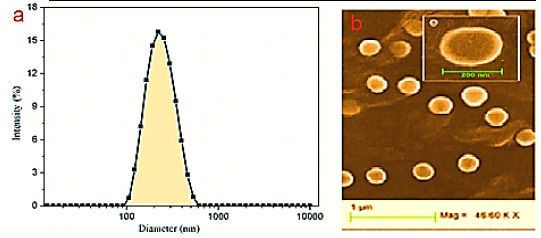 |
Figure 1: Inhibition zone diameters of the tested plants against the tested bacteria |
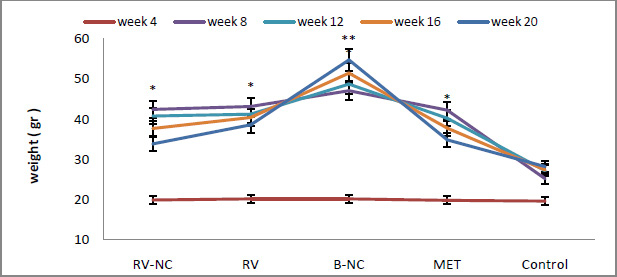 |
Figure 2: Inhibition of S.aureus by the tested plants , antibiotic and synergetic effect between plant extract and antibiotic |
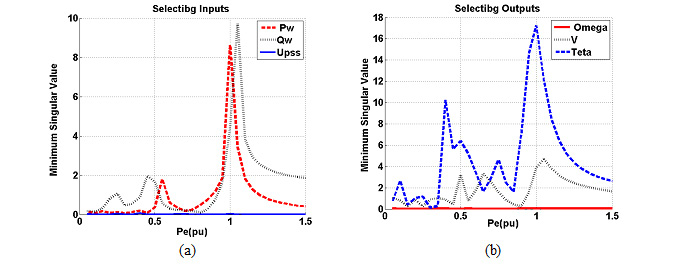 |
Figure 3: Inhibition of K. pneumonia by the tested plants , antibiotic and synergetic effect between plant extract and antibiotic |
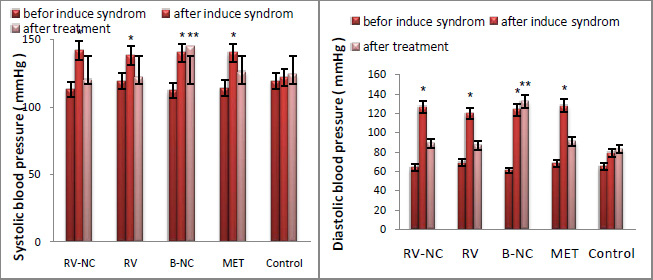 |
Figure 4: Inhibition of E.coli by the tested plants , antibiotic and synergetic effect between plant extract and antibiotic |
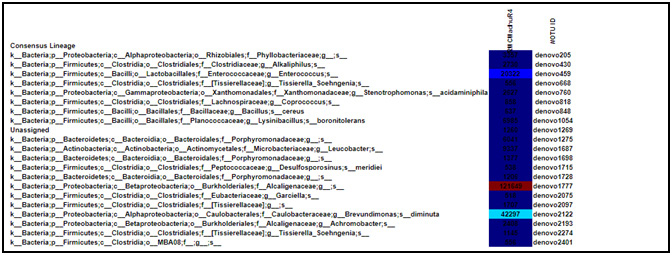 |
Figure 5: Inhibition of A. baumannii by the tested plants, antibiotic and synergetic effect between plant extract and antibiotic |
Generally, the synergism between Harmal extract was more effective in inhibition of antibiotic-resistant bacteria, followed by Senna and finally Safflower. The most inhibited microorganism was Staphylococci aureus where the inhibition zone diameter was 16 mm and 9 mm for the combination of Harmal extract plus antibiotic and for antibiotic only, respectively.
Eschrichia coli bacteria were highly inhibited by Harmal, Senna and Safflower water and methanolic extract combined with antibiotics. However, Harmal-antibiotic combination has the highest inhibitory effect followed by Senna-antibiotic and safflower-antibiotic, where the inhibition zone diameter was 14 mm, 13 mm and 12 mm , respectively. Moreover, the methanolic extracts of the tested plants with added antibiotic was more effective compared to the water extracts of the tested plants with added antibiotic. Acinetobacter baumannii was inhibited by Harmal-antibiotic and Senna-antibiotics combinations at the same extent and the inhibition zone diameter of the methanolic and water extract combined with antibiotics was 13 mm and 10 mm, respectively. Safflower water and methanolic extract also inhibited the Acinetobacter baumannii, however, combination of the methanolic plant extract with antibiotic was more effective.
In the present study, the plant extracts had different synergistic ability to inhibit the growth of microorganisms. However the zones of inhibition of all tested microorganisms resulted from plant extract-antibiotic combinations were greater than those resulted from antibiotics merely. Therefore, increased plants antimicrobials have been found to be synergistic enhancers in that though they may not have any antimicrobial properties alone, but when they are taken concurrently with antibiotics they enhance the effect of these drugs.
Drug synergism between antimicrobial agents and plant extracts has been reported (Nascimento et. al., 2000; Aburjai et. al., 2001; Aqil et. al., 2005; Esimon et. al., 2006; Ibezim et. al., 2006).
Staphylococcus aureus is recognized as one of the major causes of infections in humans occurring in both the community and the hospital. Methicillin-resistant and multidrug resistant staphylococci have become a major nosocomial pathogen (NNIS System, 2004). Therefore, it is of vital importance to identify new effective antimicrobial agents. Among the potential sources of new agents, medicinal plants have long been investigated.
Conclusion
In conclusion, the medicinal plants which included: Pergularia tomentosa L. (Umlabina), Peganum harmala L. (Harmal), Cassis italic Mill (Senna), Asphodelus fistulosus (Bargog), Teucrium polium (Guaada) and Carthamus tinctorius (Safflower) collected from various sites in Hail area have antimicrobial properties against the tested antibiotic-resistant bacteria with various degrees which may reflect the antibacterial activity of plant active ingredients that inhibit bacterial growth. However, both Harmal and Senna plants exhibited the highest antibacterial effects against the antibiotic-resistant bacteria compared to other tested plants. The results will also reveal the importance of plant extracts when associated with antibiotic drugs in control of pathogenic and spoilage bacteria. Future investigation of the plants extract to isolate and recognize the active ingredients is highly recommended.
Acknowledgements
The authors express their gratitude to the Deanship of Scientific Research of University of Hail, Saudi Arabia for financing this research (Project No. 01150009).
Refrences
- Abiramasundari.P, Priya .V, Jeyanthi.G.P, and Gayathri Devi. S (2011). Evaluation of the Antibacterial activity of Cocculus hirsutus. Hygeia. Journal for Drugs and Medicines vol.3 (2), 26-31.
- Aburjal T, Darwish RM, Al-Khalil S, Mahgzah A, Al-Abbdi A 2001. Screening of antibiotic resistant inhibitors from local plant materials against two different strains of Pseudomonas aeruginosa. J Ethnopharmacol 76: 39-44.
- Amenu D (2014) Antimicrobial Activity of Medicinal Plant Extracts and Their Synergistic Effect on Some Selected Pathogens American Journal of Ethnomedicine, Vol. 1, No. 1, 018-029
- Aqil F, Khan MSA, Owais M, Ahmad I 2005. Effect of certain bioactive plant extracts on clinical isolates of ß-lactamase producing methicilin resistant Staphylococcus aureus. J Basic Microbiol 45: 106-114.
- Chanda. S and Rakholiya. K (2011). Combination therapy: Synergism between natural plant extracts and antibiotics against infectious diseases. Science against microbial pathogens: communicating current research and technological advances A. Méndez-Vilas (Ed.).
- Chang, Y.L., King, B., Lin, S.C., Kennison, J.A., Huang, D.H. (2007). A double-bromo domain protein, FSH-S, activates the homeotic gene Ultrabithorax through a critical promoter-proximal region. Mol. Cell. Biol. 27(15): 5486–5498.
- Choudhary. K., Singh. M and Pillai. U (2008). Ethnobotanical Survey of Rajasthan – An Update. American-Eurasian Journal of Botany, Vol.1 (2): 38-45
- Egamberdieva D. S. Wirth U Behrendt P Ahmad G Berg (2017) Antimicrobial Activity of Medicinal Plants Correlates with the Proportion of Antagonistic Endophytes Front. Microbiol., 09 February 2017 | https://doi.org/10.3389/fmicb.2017.00199
- Esimone CO, Iroha IR, Ibezim EC, Okeh CO, Okpana EM (2006). An in vitro Evaluation of the interaction between tea extracts and penicillin G against Staphylococcus aureus by the decimal assay for additivity (DAA) method. Afr. J. Biotechnol. 5(11): 1082 –1086
- Ibezim EC, Esimore CO, Obodo CE, Nnamani PO Brown SA, Onyishi IV (2006). A study of the in vitro interaction of cotrimoxazole and ampicillin using the checker Board method. Afr. J. Biotechnol. 5(13): 1284-1288
- Kirbag. S, Zengin. F and Kursat. M (2009). Antimicrobial Activities of Extracts of some Plants. Pakistan Journal of Botany Vol.41(4): 2067-2070.
- Kumar, V., Alla, S.R., Krishnan, K.S., Ramaswami, M. (2009). Syndapin is dispensable for synaptic vesicle endocytosis at the Drosophila larval neuromuscular junction. Mol. Cell. Neurosci. 40(2): 234-241. (Export to RIS)
- Nascimento GGF, Locatelli J, Freitas PC, Silva GL (2000). Antibacterial activity of plant extracts and phytochemicals on antibiotic-resistant bacteria. Braz. J. Microbiol. 31: 247-256.
- NNIS System. (2004). National Nosocomial Infections Surveillance (NNIS) System Report, data summary from January 1992 through pJune 2004, issued October 2004. Am. J. Infect. Control 32: 470-485.
- Pandey, A.K. and Chowdhry, P.K (2006) Propagation techniques and harvesting time on productivity and root quality of Withania somnifera. Journal of Tropical Medicinal Plants Vol.7:79-81.
- Shakeri. A, Hazeri.N, Vlizadeh. J, Ghasemi. A and Tavallaei. F (2012). Photochemical Screening, Antimicrobial and Antioxidant Activity of Anabasis aphylla L. Extracts. Kragujevac J. Sci. 34: 71-78.
- Wink M. (2015) Modes of Action of Herbal Medicines and Plant Secondary Metabolites Medicines 2, 251-286; doi:10.3390/medicines2030251


